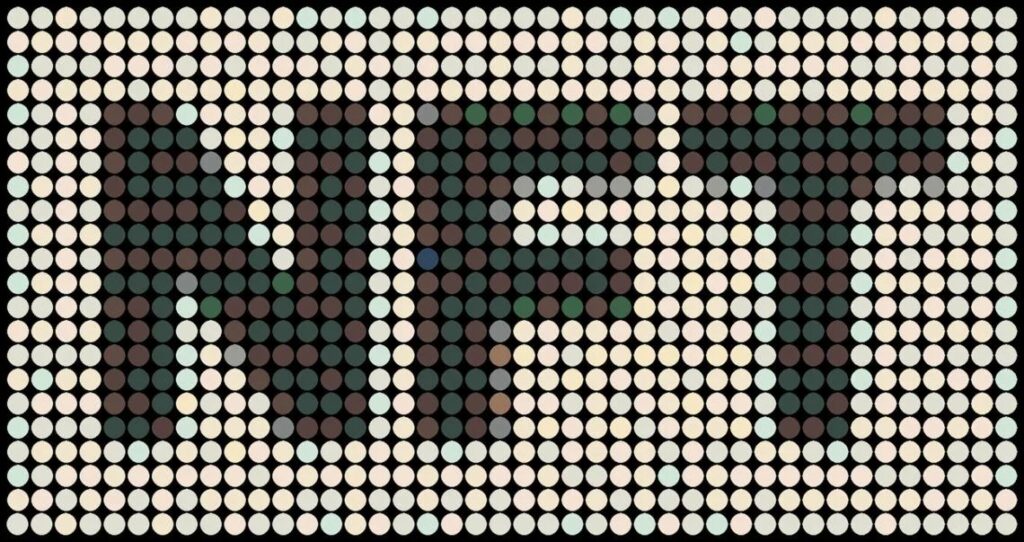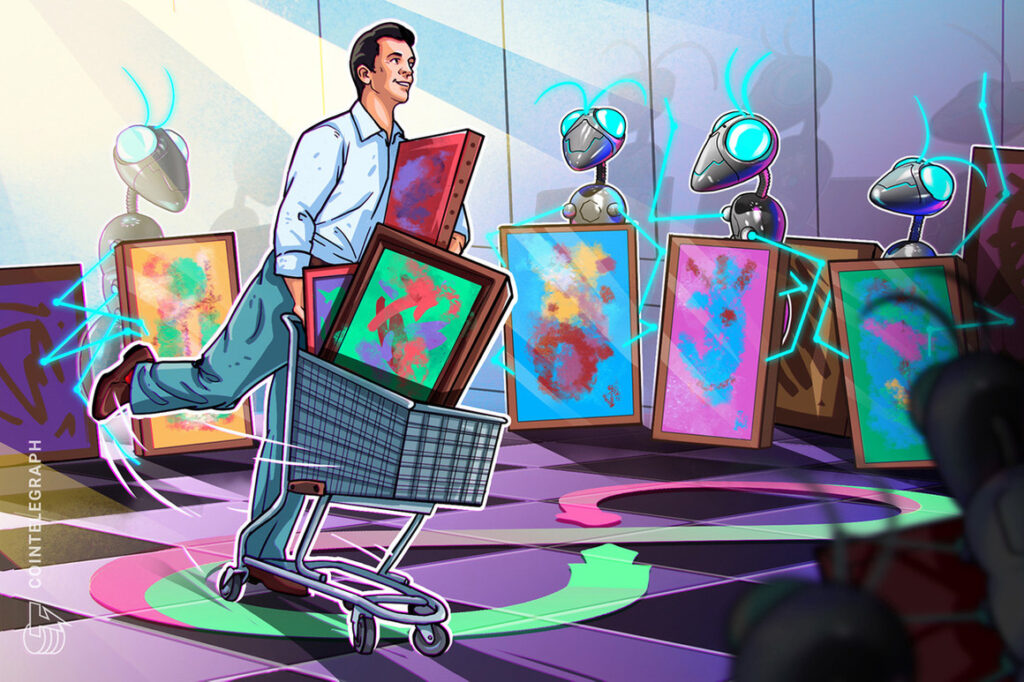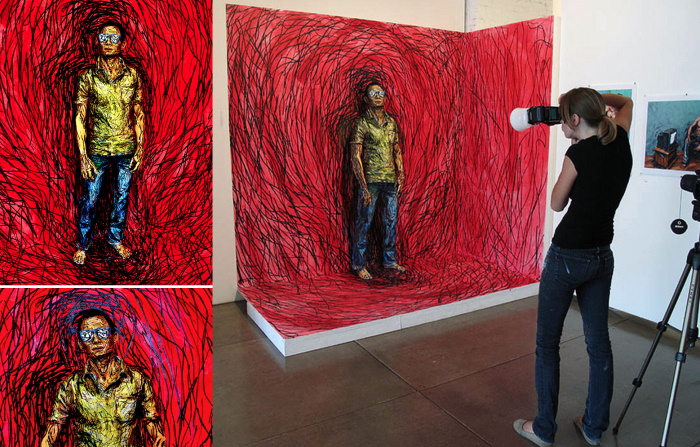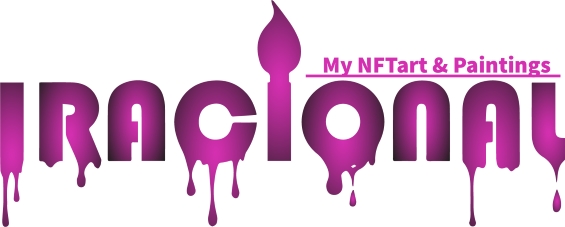
Non-fungible tokens (NFT) are a new phenomenon in the world of art and cryptocurrencies . They open up new possibilities for artists and collectors, allowing to sell and buy digital assets as unique and unique. Built on the basis of blockchain technology , NFTs enable ownership and authenticity of digital assets, enabling new forms of art and business to be created in the digital space. We will look at what NFTs are, how they are used in the art industry, and what their advantages and disadvantages are.
What are NFTs?
NFT (Non-Fungible Token) is a digital asset that confirms ownership of a specific unique object or content, such as pictures, music, videos, graphic images, etc.
Most often, NFTs are used in cryptocurrencies blockchain networks , such as Ethereum , where they are recorded in the blockchain , which makes it possible to verify the authenticity and ownership of a digital asset.
Each NFT has its own unique code that confirms that this particular asset is one of a kind. This code also contains information about previous owners, allowing you to track the ownership history of the asset.
NFTs have become quite popular in the arts, sports and other industries where they are used to sell and share digital content. For example, famous artists have sold their NFT paintings for millions of dollars, and professional athletes have started selling NFT versions of their best moments in matches.
What is the difference between interchangeable token and substitute
Non-Fungible Tokens (NFT) and Fungible Tokens (FT) are two types of cryptocurrencies tokens used on blockchain networks . The main difference between them lies in their uniqueness and functionality.
NFTs are unique tokens that represent a single digital activity, such as a work of art, video, audio, or game. Each NFT has its own unique identifier that confirms its ownership and authenticity. Therefore, NFTs cannot be substituted for each other as they have different characteristics and values .
FTs , on the other hand, are not unique and identical to each other. They can be easily interchanged because they have the same characteristics and meanings. Such tokens are more often used as a means of payment in the ecosystems of blockchain networks .
So, the main difference between NFT and FT is their uniqueness and functionality. NFTs are unique and cannot be exchanged, while FTs are not unique and can be exchanged for one another.
How NFTs are used in the art industry

NFTs have become very popular in the art industry. They allow artists to sell their unique digital creations and preserve their authenticity and ownership.
One of the main uses of NFT-art is the sale of digital works of art through blockchain networks . Artists can create unique digital works that do not exist in physical form, but have an imprint in the blockchain , which confirms their authenticity and uniqueness. Such works can be sold at online auctions , between artists, or through places that specialize in selling NFTs, such as Nifty Gateway , SuperRare , OpenSea , Foundation , etc.
Another way to use NFTs is to use them as a tool for art contracts and revenue sharing. For example, artists can create NFT art that gives them the right to own a stake in their work or receive revenue from sales.
NFTs also allow artists to control the use of their works and receive compensation for their use. For example, if a company wants to use an artwork from an NFT in an advertising campaign, it can seek permission from the owner of the NFT and negotiate compensation for the use of the artwork.
Therefore, NFT-art is not a work of art as such, but acts only as a unique code attached to this work. But NFTs give artists new ways to sell their digital works and control their use, a major breakthrough in the art industry.
Positive and negative qualities of creativity in the form of NFT
Positive qualities of creating your creativity in the form of NFT:
- The ability to sell your digital creations online and preserve their authenticity and uniqueness.
- Artists can control the use of their works and receive compensation for their use.
- Creating an NFT can help artists attract new fans as well as expand their audience.
- Digital works created in NFT format can be more affordable to purchase and store compared to traditional works of art.
Negative qualities of creating your creativity in the form of NFT:
- Creating and selling NFTs can be difficult for artists who do not have experience in blockchain and cryptocurrencies .
- Saving NFTs can be difficult because they are stored on the blockchain network , which can be attacked by hackers.
- Not all art collectors and fans may like digital art and its NFT sales format.
- The prices of NFTs can differ significantly from the prices of traditional works of art, which can create volatility in the market.
- The process of creating an NFT may require financial costs for placement in the blockchain sphere .
The most famous platforms for buying and selling NFT
Top 20 Platforms to Buy and Sell NFTs:
- OpenSea
- SuperRare
- Nifty Gateway
- Foundation
- Rare
- KnownOrigin
- Async Art
- Atomic Market
- Mintable
- BakerySwap
- Axie Marketplace
- Binance NFT
- Cargo
- Dapper Labs
- Engine Marketplace
- Hic et Nunc
- MakersPlace
- Portion
- S!NG
- Treasureland
Note that there are many other platforms for selling and buying NFTs, and the choice of platform depends on your needs and requirements.
How to convert own subject of art on NFT-art

For example , you drew a picture and want to digitize her in NFT format . Or create an NFT link to yours picture , which will confirm the rights to the picture itself. For this necessary implementation the following steps :
- Choose a platform: exists many various platforms for creating and selling NFTs, such as OpenSea , Rarible , SuperRare and others . Choose the platform that is the most fits your needs and budget.
- Prepare a picture : use it program for graphics editing to _ prepare your painting for conversion to NFT. You can be necessary high quality photos or vector image to create NFT.
- Select blockchain : select blockchain – the network that you you want use to create of your NFT. Ethereum is one of the most popular networks to create NFTs, but exist others blockchain networks such as Binance Smart Chain , Flow and others .
- Create your NFT : create your NFT on the platform of your chosen blockchain network . You will usually need to specify some details such as title , description , media type and other characteristics of your NFT.
- Upload your painting: Upload your painting to the platform and generate NFT by specifying price and others details . After _ now your NFT is ready to sell.
Importantly remember that _ creating and selling NFTs can be complicated process , so carefully read the terms and conditions of the platform to avoid sales problems of your NFT.
